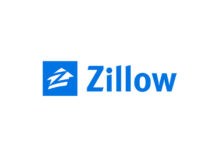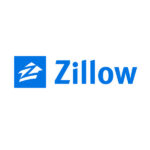
Insurance companies have been active across Africa and Asia for decades and yet in most countries less than 3% of the population have access to any form of insurance. It’s a market failure that leaves those that face the most risk with no safety net to stop them falling back into poverty. In the last few years a number of new insuretech’s have started to focus on serving the 97% who have been excluded. As a market we are selling a range of life, accident and health products that typically cost from between 3 cents to one dollar per month.
These new players are leveraging a B2B model and working with distribution partners that have a large number of clients that frequently interact with their core service combined with an existing payment mechanism. These partners have included mobile networks, e-wallets, banks and e-commerce companies with tens of millions of clients signed up for insurance over the last few years.
The new insuretech’s have had to identify and address the existing market failure which has resulted in them taking on a much wider range of activities than insuretech’s in developed markets. It’s not uncommon for these new entrants to design the product, create the customer journey, drive sales via call centres, collect the premium, educate the consumer and administer claims.
Traditional insurers are still involved but have been marginalised to the role of providing the balance sheet thereby handing the creation of the market and day-to-day operations to the insuretech’s. In some markets the insuretech’s are starting to question whether they really need the headache of partnering with a traditional insurer and we are starting to see the transition from being regulated as intermediaries into securing a license to underwrite business in their own capacity.
What is clear is that the key challenge facing insuretech’s that wish to serve emerging consumers is one of overcoming distribution hurdles. The industry first cut its teeth partnering with microfinance banks in Africa but it soon became clear that this channel would not yield sufficient volume of customers.
The breakthrough came in 2009 with mobile networks where insurance was used to reward pay-as-you-go mobile users for increased loyalty. The more airtime you bought the more free insurance you received next month. This approach resulted in millions of people signing up for insurance for the first time; in India we saw over 20 million people sign up for insurance in just 140 days. Whilst this model resulted in lots of people getting a first taste of insurance it was ultimately unsuccessful in being able to yield long term insurance clients as the mobile networks made it difficult to secure the necessary digital assets to upsell insurance to their customers.
A re-think was needed and in the last few years we have seen a new B2B2C model emerge where the insuretech’s have taken on the cost of selling the insurance via out-bound call centres with premiums deducted either from a client’s airtime balance or from their mobile wallet. Whilst this has resulted in a slower ramp up of the number of clients it is so far proving to be a more sustainable model for the insuretech’s who can sell higher value products and earn higher fees from a longer-term client base.
Looking beyond the mobile networks the market has realised that we need to work with partners that have a large number of customers, are trusted and have a payment platform baked in. We are starting to see new distribution take off with ride hailing companies, utilities and e-commerce players.
Trust is an interesting concept and insurers talk about it a lot but what we have come to realise is that trust is really just “frequency of use”. The reason clients trust their mobile network is that when they buy top up it works and they top up regularly so have many opportunities for that brand to show its trustworthiness. Insurance is not trusted because it’s not used often and also because when it is used traditionally we have made it hard for people to make a claim! This has also been an area of focus for emerging market insuretech’s with a lot of focus on digitising the customer journey so that claims can be paid within a day or certainly within one week of the loss event.
In fact we have learnt a lot about how to streamline the customer journey to make it easy to sign up and use our insurance products. I recall one product where we realised we were losing 80% of potential clients just by asking them their name, age and next-of-kin details. You see, we are not competing with AIG, AXA or Chubb here we are competing with apathy. Most of our clients have not had insurance before and if there is any friction in the customer journey then the easiest thing to do is simply not buy insurance.
A lot that we are learning in serving these emerging consumers is unique and not transferable but it’s also increasingly clear that many of the lessons we are learning are in fact also relevant to developed markets. Imagine what would happen if you could buy insurance in the US for a dollar with a simple click on your mobile and get your claim paid same day! Sooner rather than later one of these players will seek to reverse engineer what they have learnt back to the developed world’s insurance market and it will be interesting to see what then happens.











